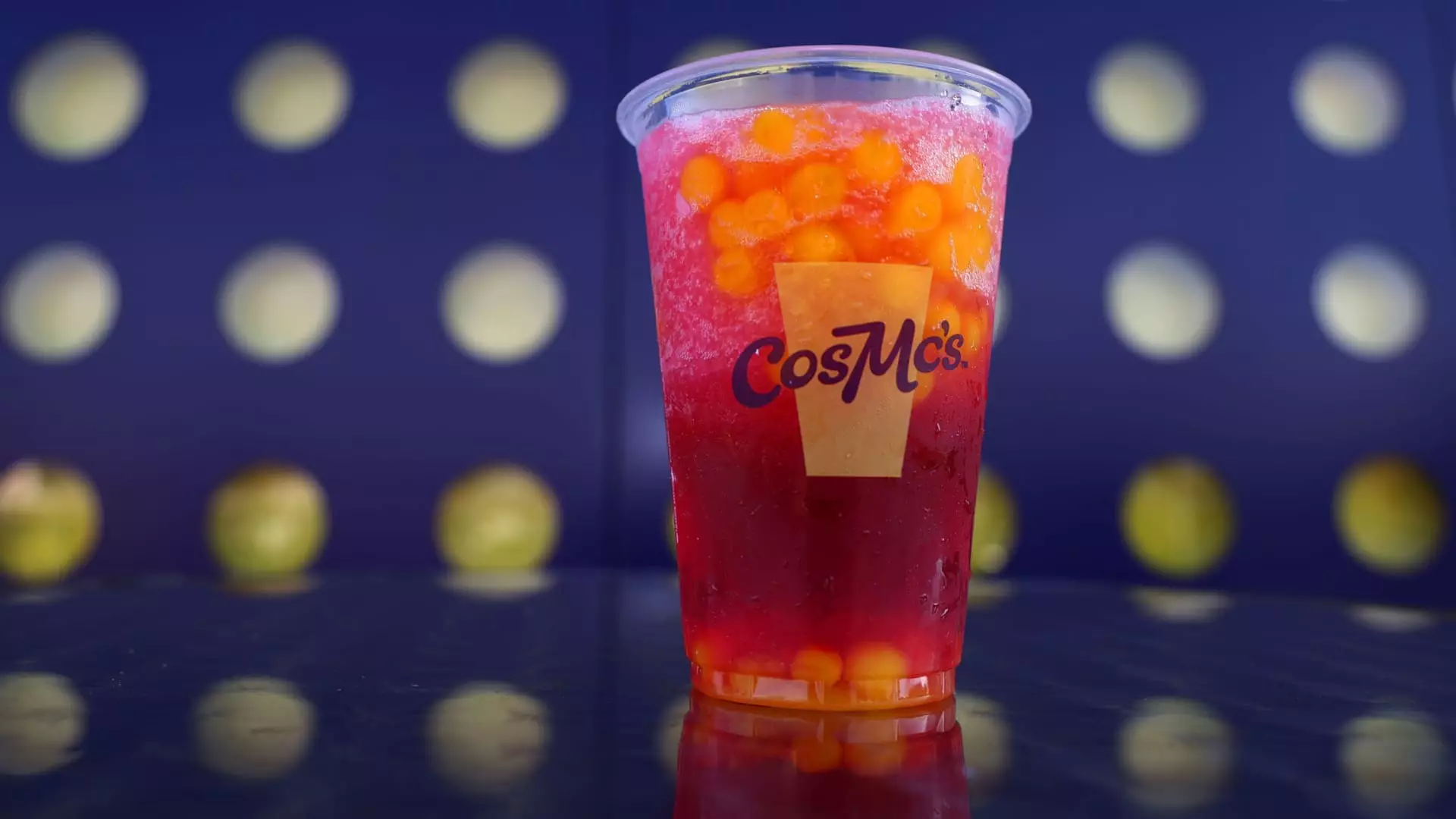The fast-food industry is undergoing a remarkable transformation, particularly in the realm of beverage offerings. Chains that traditionally focused on burgers, fried chicken, and fries are now taking bold leaps to revamp their drink menus to appeal to the ever-changing tastes of younger consumers, primarily Gen Z. Driving these changes is not merely a desire for innovation but an urgent need for major players to carve out a niche in an increasingly competitive market. As companies pivot their strategies to focus on eye-catching, high-caffeine beverages, it reveals a stark shift away from classic soft drinks and into a world filled with vibrant flavors and imaginative concoctions.
The Beverages that Win Hearts
Gone are the days when a simple soda would suffice with your meal. Fast-food chains like Chick-fil-A and Taco Bell are now capitalizing on elaborate drink options, including seasonal delights like Pineapple Dragonfruit beverages or entirely new café experiences within existing locations. The establishment of Taco Bell’s “Live Mas Café,” featuring an extensive variety of caffeinated refreshers and specialty concoctions, is a testament to this change. By shifting focus from burgers to beverages, these companies aim to create a refreshing and rejuvenating customer experience that resonates with a younger demographic eager for novel flavors.
Michael Parlapiano of the Culinary Edge aptly notes, “As the consumer moves away from the traditional soda, there’s an opportunity for operators and different brands to bring something signature to the table.” Even legacy restaurants that hesitated to branch out into unique flavors are now experimenting with premium ingredients, such as Wendy’s blueberry pomegranate lemonade, showing that even the most conservative fast-food giants are willing to embrace change.
Culture of Openness: Gen Z’s Role
At the heart of this beverage renaissance is Gen Z, a generation that not only seeks out unique flavors but also embraces cultural diversity in their food choices. This willingness to experiment with exotic ingredients like ube and butterfly pea is a golden opportunity for fast-food chains. The current menu trends suggest that operators are keenly aware of Gen Z’s preferences; they are eager to try something bold, making them ideal candidates for innovative drink recommendations.
Claire Conaghan, a trendologist at Datassential, frames it as a “little treat culture,” where the younger populace is willing to splurge on sugary beverages, despite knowing their health implications. In essence, for these consumers, the act of indulging in a sweet drink is less about the health matrix and more about the emotional reward associated with it.
Shifting Economic Models
The shift towards creative beverage marketing also reflects a smart economic model for fast-food chains. Drinks are often more profitable than food items and require less operational complexity. Both Wendy’s and El Pollo Loco have recognized the substantial growth possibilities in capitalizing on beverage sales. With the average customer not ordering a drink with their meal, these companies are incentivized to make drinks a centerpiece of their marketing initiatives – and they’re pulling it off remarkably well.
The proportion of beverages to food is changing, allowing these chains to focus on generating higher profit margins with minimal fuss. Market research firms like Technomic illustrate this rapid evolution, as companies experience surging sales tied to inventive beverages, bouncing back from years of stagnant soda consumption.
Bubble Tea: The Trendsetter
Bubble tea has emerged as an unexpected trendsetter in the fast-food landscape. Originally a niche offering, it’s now inspiring chains to incorporate chewy tapioca pearls, boba-inspired accouterments, and even texture-adjusting elements. McDonald’s CosMc’s features options like fruity popping boba, demonstrating that traditional fast-food cuisine is undergoing substantial metamorphoses. In this era of mashups, the potential for inventive drink options is limitless, offering an avenue for chains to craft unique beverages that are not confined by traditional flavor profiles.
Shake Shack’s tropical kiwi lemonade, replete with actual kiwi pieces, demonstrates how fast-food chains can evoke a sense of both functionality and fun, merging the novelty drinks ethos with established comfort.
The Future of Fast-Food Beverages
As we look ahead, the beverage segment will likely solidify its role as a central pillar of fast-food operations, with progressive chains like Taco Bell envisioning a $5 billion beverage business by 2030. Their focus on creating drink-centric experiences, as exemplified by their extensive Live Mas Café menu, reveals a future where beverages will draw focal attention and customer loyalty.
For companies adjusting their models, the marketplace welcomes exploration and innovation. From horchata coffee to florals like yuzu gaining traction, the possibility for unique and culturally rich beverages is not only appetizing but pivotal for market survival. The reality is simple: those who fail to innovate risk losing their footing in the vibrant landscape of fast-casual dining, where drinks aren’t just refreshing, but rooted in cultural savvy and imaginative thinking.


Leave a Reply